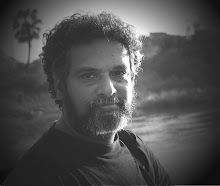Nagamandala by Neelam mansigh Chaudhary and Qwwali by Warsi brothers excelled…
Day 5 of Desh Parva (Festival of Performing Arts) of Sangeet Natak Akademi– Out of all the performances Nagamandala directed by Neelam mansingh Chaudhari and Qwwali sung by Warsi brothers excelled.
Day 5 of Desh Parva captivated the audiences by the performance of NAGAMANDALA in Punjabi was staged at Shri Ram Centre. It was written by Girish Karnad and directed by Neelam Man Singh Chowdhary.

Said Mr Kastuar The secretary of SNA, “Nagamandala one of the recent works of the great Kannada playwright Girish Karnad was admirably portrayed with Punjabi sensibilities by Neelam Man Singh Choudhary”.
By the late evening there was QAWWALI which was presented by Warsi Brothers at Meghdoot Theatre. Qawwali is a form of devotional song special to India and Pakistan, rooted in the Sufi musical tradition which dates back to the 13th century. Quawwali is generally credited to the genius of Amir Khusrau. The lyrics are in Persian, Urdu or Hindustani, the themes mystical love, praise of Allah, the Prophet or the Sufi saints.
The Warsi brothers, Nazeer Ahmed Khan Warsi and Naseer Ahmed Khan Warsi, belong to the Qawwal Bachchon ka Gharana, and are known for the purity of the ragas they render. Both the brothers perform regularly on All India Radio.
“In the performances of Warsi Brothers of Hyderabad, the tradition Qwwali had both the dignity of Bhakti Sangeet as well the vibrancy of the popular appeal, shared Mr Kastuar”.
The music took the audience to a bliss with the elaboration of the music, and the meaning that addressed to the seculat tones of the country which was concluded with the singing of ‘Raghupathi raghava Rajaram’…
The afternoon session of Desh Parv consisted of folk dances form various states of India making the spectators dance to its beat. They were: Karadi Majalu (Karnataka); Dhimsa (Andhra Pradesh); Jat Jatin (Bihar); Cheraw (Mizoram); Garbo (Gujarat); Korku ( MP); Paraja (Orissa); Hozagiri (Tripura); Ghasiyari (Uttarakhand); Raibense (West Bengal) Santhali ( Jharkhand). In Desaj, the performances of Bihar and Jharkhand together with the other states drew a great applause. Prof Munde and his group of Santhali artists from Jharghand sang and danced to create a peaceful atmosphere of vibrant tribal life in the Nationalist capital.
The action was not just limited to central Delhi. As a part of the celebrations, a slew of dance performances were presented at the “Kathak Kendra” in north Delhi. They were a part of the “Nritya Rupa” segment. They staged Kathak.
In the morning sesssion of Kulavarnnika, Shagan Bhutani and Tripura Kashyap performed to their own distinctive styles, adaptation of poems from poems of Albert Wendt’s Dennis Brutus respectively .

Thripura did three short pieces, each in its own distinct context and mood, and hence demanding an independent interpretation. They range from dense verse to the extraordinary sparseness of great philosophical truths. As observed by SNA’s Secretary, Jayant Kastuar “Kulvarnika concept of performance on Commonwealth literature gained a new dimension in Tripura Kashyap’s work on three poems of South Africa represented in her innovative style”.
“Desh Parv”, the 10-day festival of performing arts of India promises to offer the citizens and the international tourist’s unique bouquet of Indian music, dance, theatre, folk, and narrative arts.
About Sangeet Natak Akademi
The Sangeet Natak Akademi - India's national academy for music, dance and drama - is the first National Academy of the arts set-up by the Republic of India. It was created on 31st of May 1952.As the apex body specializing in the performing arts of the country, the Akademi also renders advice and assistance to the Government of India in the task of formulating and implementing policies and programmes in the field. Additionally, the Akademi carries a part of the responsibilities of the state for fostering cultural contacts between various regions in India, and between India and the world.


0 Comments:
Post a Comment
Subscribe to Post Comments [Atom]
<< Home